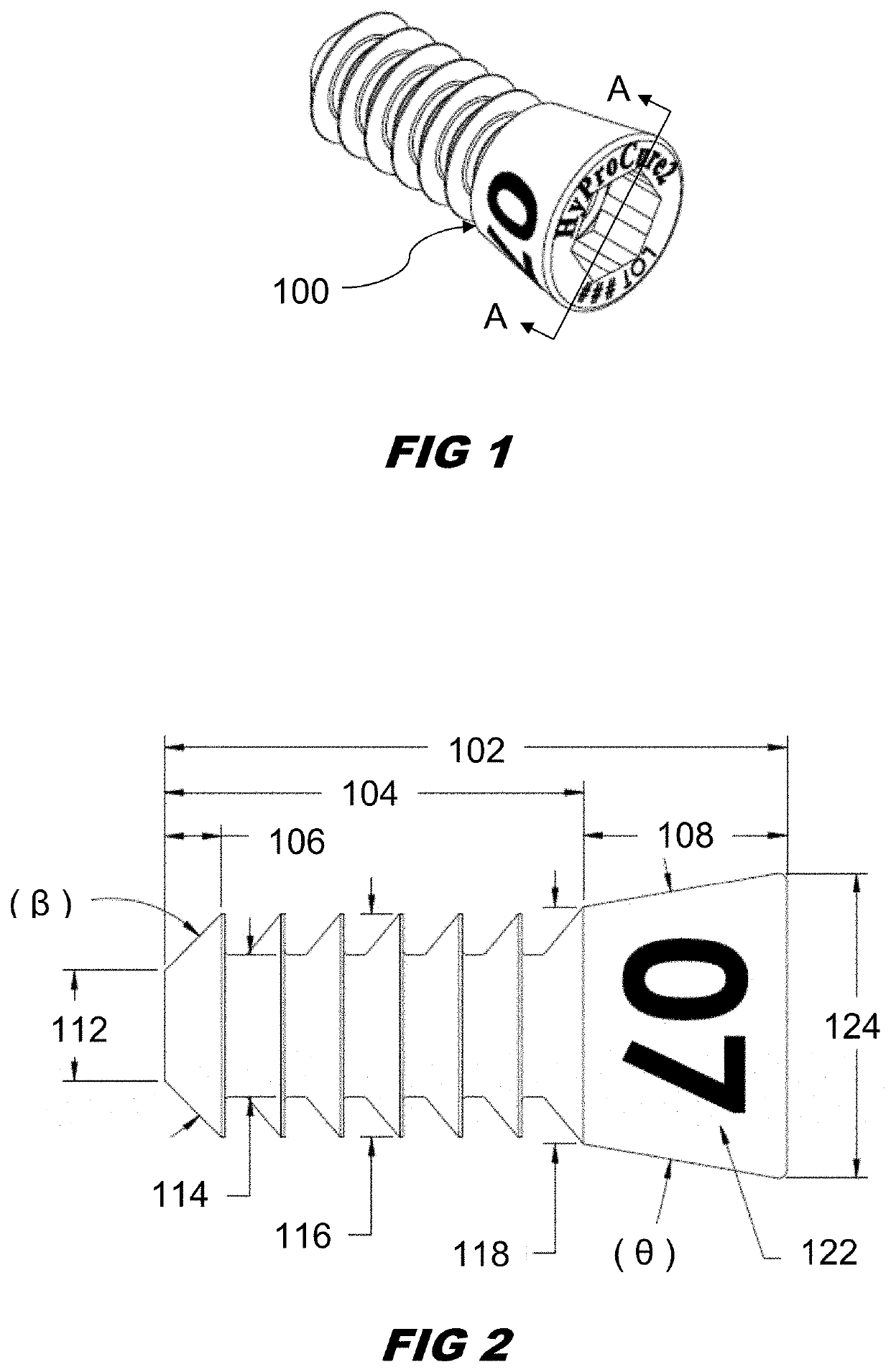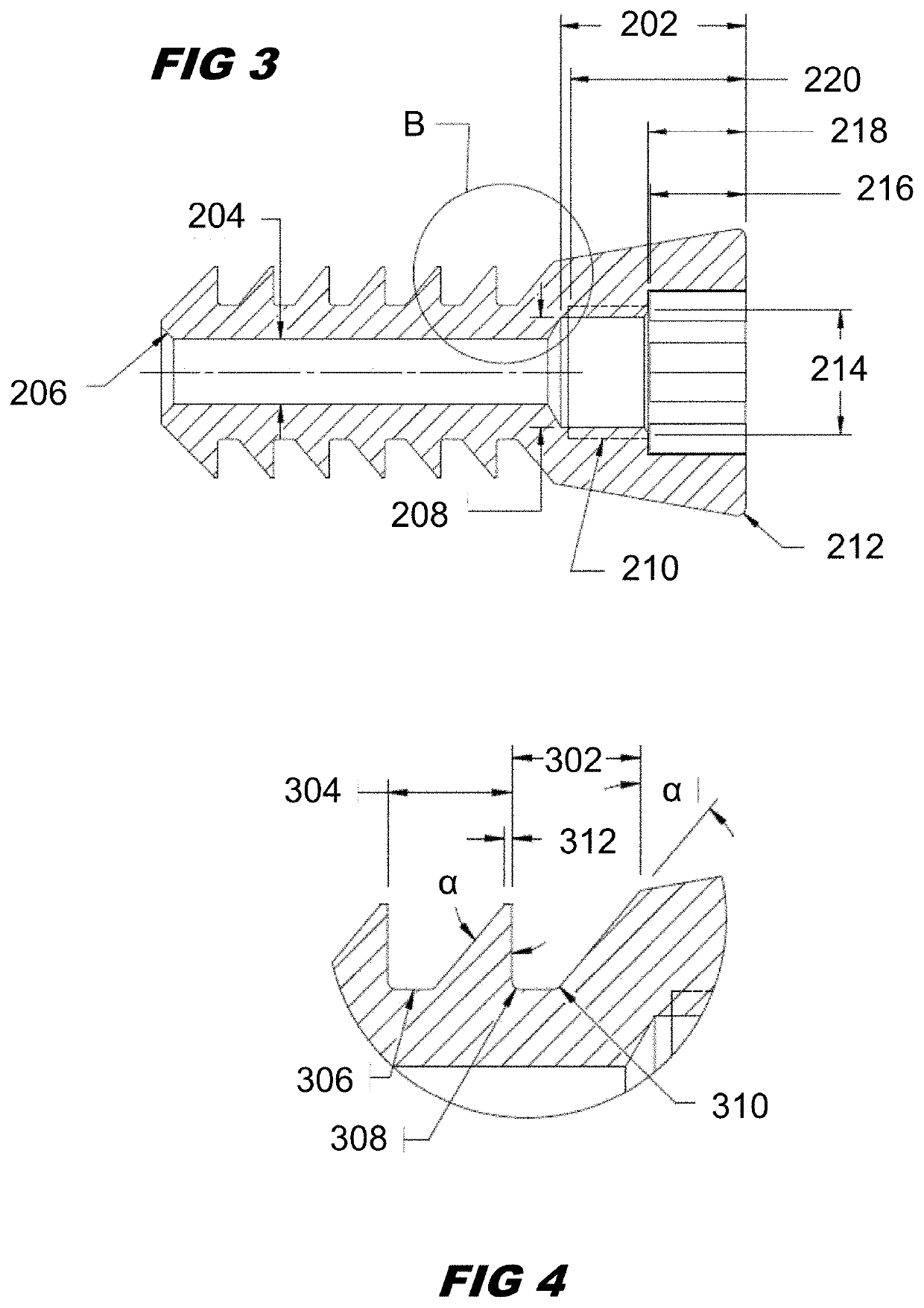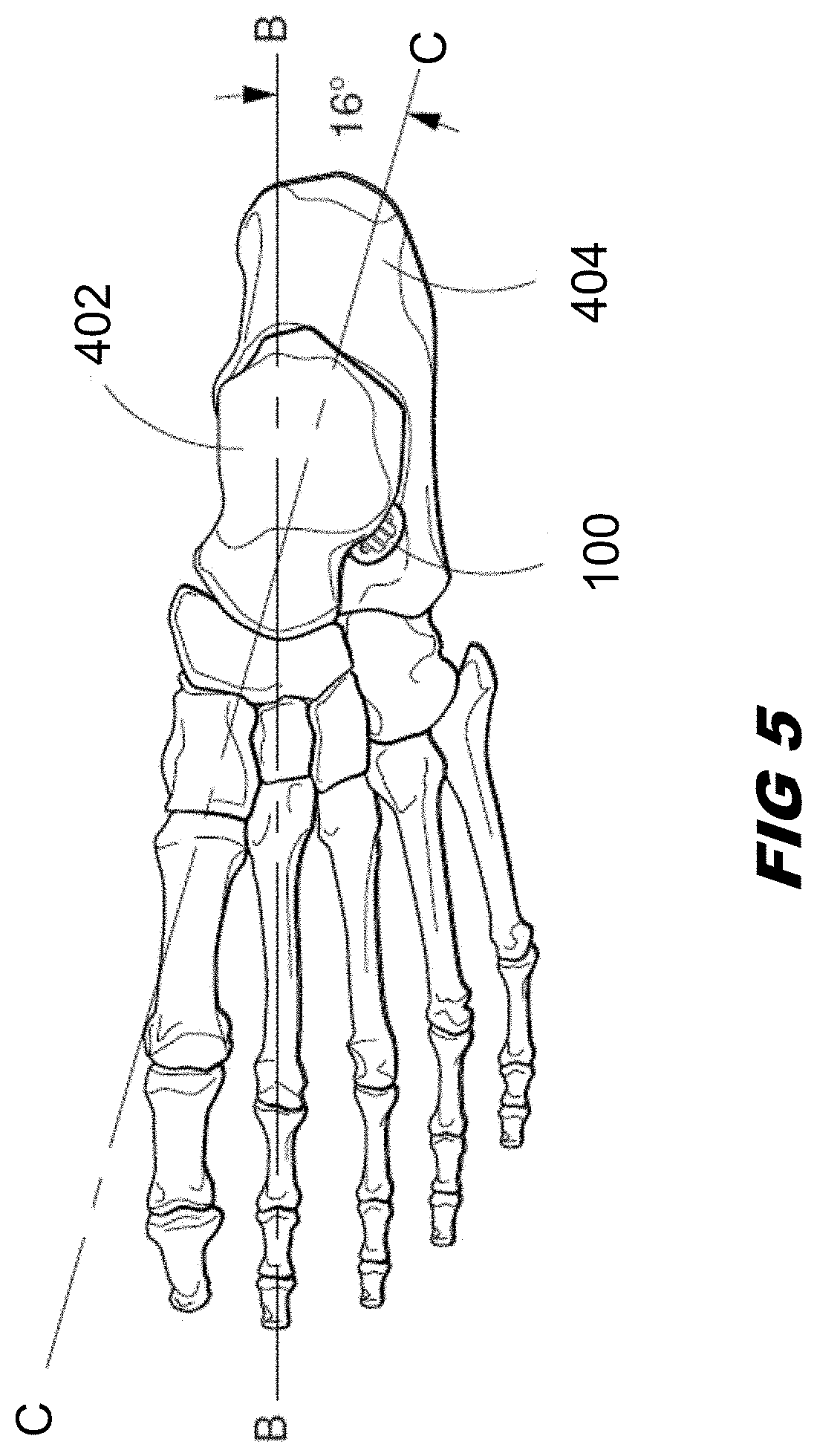Sinus tarsi implant
a technology of tarsi and implants, which is applied in the field of enhancing and correcting skeletal mechanics of medical devices, can solve the problems of significant deleterious effects of bony architecture, excessive pronation, and anatomical mal-alignment, and achieves less trauma, accurate placement, and increased mechanical retention
- Summary
- Abstract
- Description
- Claims
- Application Information
AI Technical Summary
Benefits of technology
Problems solved by technology
Method used
Image
Examples
Embodiment Construction
[0032]Referring now to the drawings wherein like numerals indicate the parts, FIG. 1 is a perspective view of the implant 100.
[0033]FIG. 2 depicts a side view of the implant. A preferred overall length of the implant is about 17 to 19 mm, more preferably about 18.34 mm. The implant has a cylindrical body portion 104 preferably 11 to 14 mm long, more preferably about 12.34 mm long. The implant also has a conical foot portion 122, 212. The foot has a relatively small top end 118 which is integrally connected to the cylindrical body. The foot flairs out to form a relatively larger circular base 124. Viewed from the side (FIG. 2) these two sides of the foot flair out together to form an angle, 0. This angle, 0, is preferably about 15° to 25°, or preferably each angle from 15° to 25° in 0.1° degree increments, or more preferably about 19.8°.
[0034]In order to properly block abnormal motion while allow normal motion, the implant 104 must have a carefully chosen outer diameter 116, 118, 124...
PUM
 Login to View More
Login to View More Abstract
Description
Claims
Application Information
 Login to View More
Login to View More - R&D
- Intellectual Property
- Life Sciences
- Materials
- Tech Scout
- Unparalleled Data Quality
- Higher Quality Content
- 60% Fewer Hallucinations
Browse by: Latest US Patents, China's latest patents, Technical Efficacy Thesaurus, Application Domain, Technology Topic, Popular Technical Reports.
© 2025 PatSnap. All rights reserved.Legal|Privacy policy|Modern Slavery Act Transparency Statement|Sitemap|About US| Contact US: help@patsnap.com



